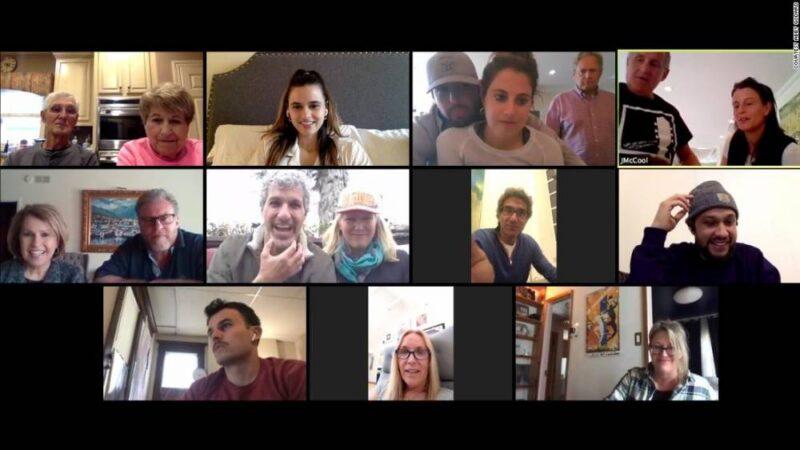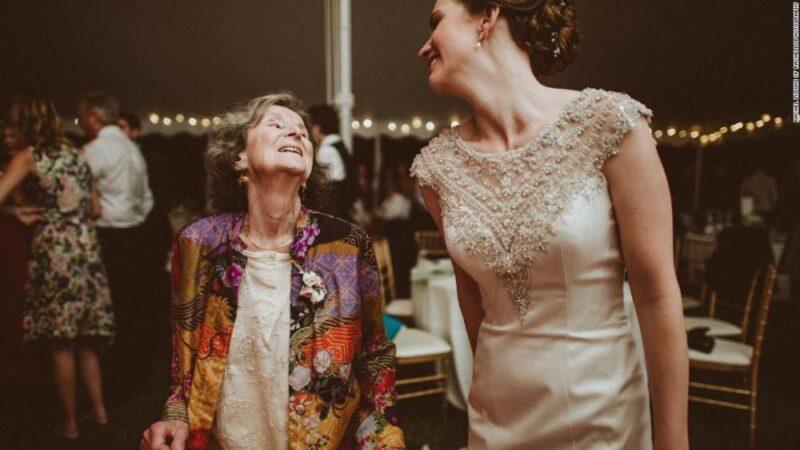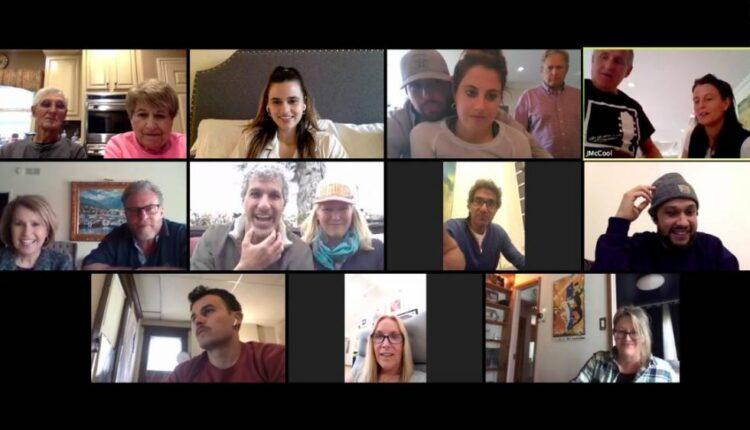New York (CNN Business)Ninety-four-year old Jane Feld typically spends her time playing tennis, attending concerts with friends and having family members over for dinner at her house in Syracuse, New York. Then the coronavirus pandemic hit.
For Feld, who is hard of hearing, video chatting with her grandchildren or other family members is difficult. She has a caption-call phone, but the live captions don’t always work well. To keep in touch during this time, she mostly uses email. “I’m not too comfortable with tech stuff,” Feld told CNN Business in an email interview. “Email has definitely helped me keep track of offspring and grands. Hours on the phone wear me out, but it’s easy to take roll with email. Just let me know you’re OK and we’ll get together as soon as possible. With a virtual hug and kiss.”
People around the world are turning to technology to stay connected during the pandemic, from livestreaming weddings and organizing virtual happy hours with friends on Zoom to meeting with coworkers on Webex. But less tech-savvy older generations are at risk of falling out of touch with loved ones at a time when stress and loneliness has the potential to impact an especially vulnerable demographic, who often lives alone or in assisted living facilities, which have been hit with coronavirus cases. In turn, families are finding creative ways to reach their elderly relatives through methods like smart picture frames, dance parties over FaceTime and simple tools like email.

Abby Godard (top row, second from left), her grandparents and extended family gather for weekly meetings on Zoom.However, barriers to entry such as signing up for accounts or learning how to navigate a new technology often make it difficult for older generations. Only 26% of internet users 65 years and older said they feel “very confident” when using computers, smartphones or other electronics to do what they need to do online, according to a 2015 study from Pew Research. More than that, it’s no perfect substitute for the real-life interactions they’ve long been accustomed to. Read More”Of course, it’s not the same as in person,” said Meredith Doubleday, Feld’s granddaughter. “It definitely doesn’t replace that, but it sure helps. I’m very grateful that we can still email. She keeps reminding me that in high school she was an excellent typist.” Abby Godard has regular virtual dance parties over Apple’s FaceTime video calling feature with her 83-year-old grandmother Yvonne Simon Perotti, who lives about 15 minutes away from her in the suburbs of Columbus, Ohio. Godard and her extended family also get together weekly on Zoom, including with her grandmother and 78-year-old grandfather Charlie Perotti. The Perottis consider themselves quite tech adept for their age and have figured out how to use services like Zoom on their own. “In our neighborhood, we have a book club. So, we have a virtual book club meeting with Zoom, which is kind of cool,” said Charlie Perotti.

Jane Feld dances with her granddaughter Meredith Doubleday at her wedding in 2016.Other families are turning to gadgets such as smart picture frames to communicate. Ann Fraser bought a ViewClix picture frame in 2018 for her 92-year-old mother Lorraine Tangney so they could keep in touch when Fraser and her husband moved to Florida. The smart picture frame, which is designed for seniors and doesn’t require them to learn new technology, lets multiple family members share photos, conduct live video calls and post virtual sticky notes with messages to their loved one. In normal times, her family members upload pictures of themselves and their travels to the frame. But during the pandemic, her relatives are relying on the video chatting function to keep in contact with Tangney, who is in an assisted living facility in Massachusetts. Her family set up the picture frame in front of her favorite chair. When a ViewClix video call comes in, it’s set to automatically connect so Tangney doesn’t have to get up to answer it. “I called her the other day on it, and the nurse was in her room, so she was able to be like ‘Oh look someone’s calling you on it.’ We had a whole conversation on it, she was so excited,” Leah Briscoe, her granddaughter, said. “We tried to do the tablet thing with her, and it wasn’t successful. She can’t really talk on the phone anymore, so we needed to get a little bit more creative with how we were going to keep in touch with her.” Fraser called the frame a “priceless” way of communicating with her. The 10.1-inch frame costs $199, while the 15.6-inch version sells for $299. ViewClix said it’s seen a 201% jump in video calls from February to March. Over a five-day period in mid-March, the company said it sold out of several months of stock of both its frame options. Skylight ($159), another digital frame aimed at seniors, said it has seen a similar increase in usage: the number of video messages sent to frames has tripled compared to last month, and early April sales are three times higher than a month ago.

Rosemary Adams waves to her family from her assisted living facility in late March 2020.But for other seniors, new devices are just too difficult to figure out. Alexandra DeLessio and her family bought her 88-year-old grandmother Rosemary Adams a Facebook Portal smart speaker, which start at $129, and walked her through how to operate it, even practicing it with her. But Adams has never used it on her own because she can’t remember how.
Adams now lives in an assisted living facility, and no visitors are allowed to come inside due to the pandemic. So her family has come up with a safe, in-person way to interact: Adams comes out onto her balcony, and DeLessio, her parents and sister shout to her from outside. Her grandmother shouts back.
Source: edition.cnn.com

